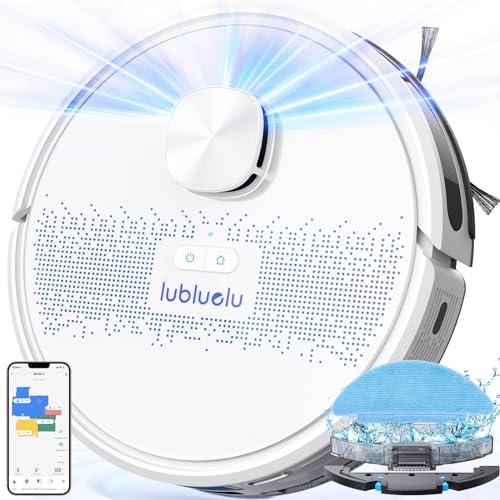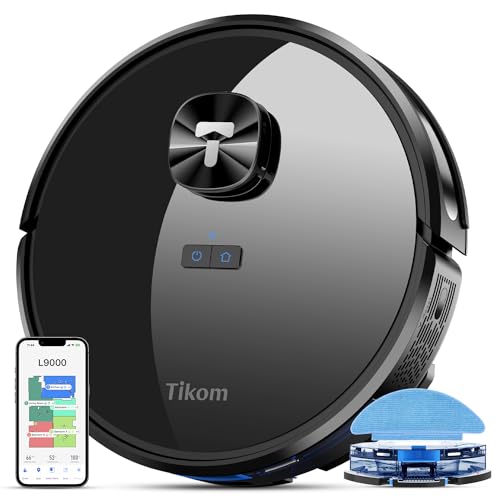Robot Vacuum Cleaner Lidar Navigation
Robot vacuum cleaners are now a part of the smart-home ecosystem. Lidar is a crucial element in elevating robotic vacuum cleaners from basic machines into intelligent, adaptable housemates.
Lidar technology aids robots in navigating and avoid obstacles using Light Detection and Ranging. This article will explore how it improves the navigation of robot vacuum cleaners.
Precise Mapping
As opposed to navigational technologies such as gyroscopes or cameras, which require the robot vacuum with lidar and camera to come in contact with objects within the room, lidar provides an extremely precise map of the area and makes it much easier to navigate. This technology allows robots to avoid obstacles and clear the entire area.
This capability of mapping is typically displayed in an application, so you can view the robot’s location at any time and the way it moves around your home. This visualization allows you to easily set up no-go zones around certain areas such as furniture and stairs. You can then alter your cleaning schedule to reflect this. The app allows you to monitor how the mapping process is progressing and whether your robot has detected any changes in the surrounding.
Robots that have mapping capabilities utilize SLAM technology to create a 3D map of the area and plan cleaning paths accordingly. It is easy to tell if the vacuum is using this system by the way it moves in your home, which tends to be more logical and well-organized, rather than running from obstacle to obstruction or having trouble clinging to edges and corners.
Lidar and SLAM are costly, but they provide an incredible level of accuracy as well as autonomy and adaptability for robotic vacuuming. This is the technology you should consider when you are focused on having a consistent and thorough clean in every single space in your home.
However, it’s worth noting that other technologies can provide similar functionality at a fraction of the price. Other options that are less expensive include gyroscope navigation systems, as well as camera-based navigation.
Neabot Dreame F9 is a great example of a robotic vacuum that is accurate in its mapping. This model uses both SLAM and cameras to identify and avoid obstacles when cleaning your home. It can also detect carpets and increase suction power automatically, making it suitable for day-to-day maintenance tasks. The application lets you set up no-go zones and schedules, as well as monitor the device’s progress from anywhere in the world.
Real-Time Obstacle Avoidance
One of the most common complaints about vacuum robots is that they may be stuck on cords, or other small objects. With the advanced obstacle detection capabilities of lidar navigation, this problem is largely eliminated. Lidar mapping robots can detect obstacles like wires, small furniture pieces and other obstacles, and navigate around them in real-time. This will ensure the thorough cleaning process.
It works by emitting laser beams which reflect off objects and surfaces in the room. The sensor determines the amount of time it takes for the laser beam to return to the robot. This gives it an idea of what’s around it. By analyzing the data an automated system can produce a detailed map of the environment in real-time.
Many robots utilize this information to design efficient cleaning paths that avoid areas that have obstacles or furniture arrangements and making sure that the entire space is covered. This technology improves battery efficiency. It reduces the amount of energy required to power the robot and lets it last longer on only one charge.
Lidar is a navigation device that can be used in low-light conditions. This makes it more robust than other robot vacuum technologies like ultrasonic sensors which measure the frequency of sound. The color of an object can influence how easily it can be detected by the robot. For example an uncolored cable on the floor or on a wall that is dark might be more difficult to spot than an uncolored cable.
Making your home ready for a robot cleaning session is a good idea. This includes removing any small items you don’t want to be vacuumed (such as toys), and ensuring that all cords, such as those for window blinds or the power cord for your refrigerator, are kept away. Also, make sure the sensor on the robot is free of debris and dust as this could cause problems with its performance. Check out the user manual, or contact customer service for tips on how to improve your robot’s navigation.
Reduced Collision Risks
In contrast to older robot vacuums which relied on sensors that rely on physical contact to detect obstacles and then change direction, a robot with lidar is able to create a precise map of the space and recognize small objects other sensors may miss. This allows robots to move more efficiently through obstacles and reduce collisions. It also lets robots create patterns that are cleaner and more systematic, ensuring every area of the home is thoroughly cleaned. This is an enormous improvement over random cleaning.
It is important to know that a robot with lidar can’t detect all kinds of obstructions. It may still be stuck on wires that have been plugged into appliances but aren’t grounded properly. The sensor may be confused by the contrast between the light cable color and the wall or floor. A cord that is encased in furniture may also interfere.
Most of the time however, a machine equipped with lidar is a major advancement over previous technologies and offers superior navigation capabilities that were a dream in the past. We highly recommend you to choose a robot equipped with this latest technology for navigation.
Lidar (Light detection and Ranging), uses a laser beam to send light pulses across the space. The sensors monitor the time it takes the light pulses to return and then translate this information into an accurate 3D virtual map. This is a significant improvement over other methods like gyroscopes, which can help to keep the robot from crashing into objects, but aren’t as effective at creating a full map of the room.
As a bonus, lidar robot vacuums can help to increase the efficiency of robot cleaning paths by enabling them to adapt to dynamic environments in real-time. For example, if you move some furniture around your home and the sensors are able to update the maps in real time to reflect the new configuration and continue to function effectively.
One downside of the use of Lidar to guide the robot vacuum is that it is often more expensive than those that use simpler navigation systems, like gyroscopes or SLAM. If you’re on a budget, there are high-quality robot vacuums that do not utilize lidar vacuum robot. They still provide superb navigation. It’s your responsibility to decide whether the additional cost is worth it for the benefits this technology could bring.
Enhance User Experience
The navigation capabilities of robot vacuums lidar offer users a seamless and easy experience. They provide precise mapping, real time obstacle avoidance, and reduced risk of collision. Lidar mapping technologies allow robots to plan effective cleaning paths, and cover entire areas unlike previous generations that relied on sensors that were simple such as cameras, infrared, bumpers, or bumpers.
A robot with this technology can set virtual boundaries within the app to stop it from causing damage to furniture or walls or navigating around cords and wires which can cause a hazardous mess for the bot. If the vac comes across these boundaries and crosses them, it will use the real-time map to navigate to get around them without your supervision or intervention.
Lidar can also help robots optimize their cleaning paths to maximize the amount of space they can cover in a single cycle, which increases battery efficiency and allows you to clean your home or apartment cleaned up in less time. Furthermore, due to the ability to spot obstacles within the space around the robot’s wheels, the lidar-equipped robot is better equipped to move around small objects, intricate furniture arrangement and low-lying barriers that may be difficult for other sensors to detect.
Integration of Lidar into robot vacuums can be a game changer when it comes to advanced features and capabilities. Multi-room scheduling, automatic trash emptying, object detection, mopping, and self-cleaning are all part of the package. These new tools are designed to help save time, energy and effort while delivering a consistently excellent clean.
 It is important to think about your budget and lifestyle when you decide the best robot to purchase. A robo vac with SLAM and lidar will be more expensive than one that has basic navigation technology however, it will be able to complete the job more quickly and efficiently than older models that utilize gyroscope or camera sensors.
It is important to think about your budget and lifestyle when you decide the best robot to purchase. A robo vac with SLAM and lidar will be more expensive than one that has basic navigation technology however, it will be able to complete the job more quickly and efficiently than older models that utilize gyroscope or camera sensors.
